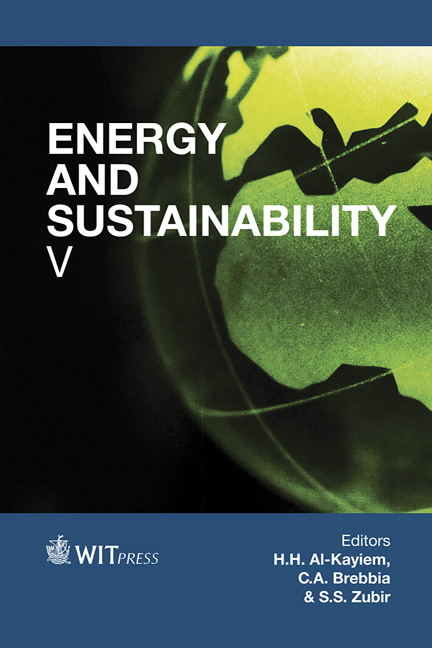An Experimental Device Designed To Obtain Repeatable Condensation Peaks In A Closed System
Price
Free (open access)
Transaction
Volume
186
Pages
12
Page Range
243 - 254
Published
2015
Size
2,086 kb
Paper DOI
10.2495/ESUS140211
Copyright
WIT Press
Author(s)
U. Soupremanien, E. Ollier, N. Salamon, S. Monfray, T. Skotnicki
Abstract
The results of an experimental study related to repeatable condensation peaks in a closed system are presented and a discussion to describe their incipiencies is detailed. The test sections (D1: filling capacity = 15.14 × 1e−9 m3; D2: filling capacity = 6.45 × 1e−9 m3) were divided into three parts: an evaporator, an insulator and a conductive top cover where a pressure sensor was inserted. The impacts of several parameters have been studied: devices’ filling ratio (α); hot temperature of the evaporator; cooling of the condensation chamber and; the devices’ dimension. For all the obtained results the frequencies were low (< 0.15 Hz) but the peak pressure amplitudes were significant (up to 987 mbar). The influence of α had been studied and its increase led to an augmentation of the pressure amplitude (exponential-like function) but to a decrease in the oscillation frequencies. The hot temperature’s increase enhanced the oscillation frequency but the pressure amplitude variations were slightly decreased. The cooling level diminution led to a frequency decrease, but to a slight variation of the pressure peak amplitude. Reducing the devices’ dimensions from D1 to D2 for the same α and cooling level allowed the increasing of the oscillation frequency without significantly modifying the pressure peaks’ amplitude. In a strategy for energy harvesting these oscillation peaks could be converted into electricity using piezo-electrics.
Keywords
oscillations, pressure peaks, energy harvesting, condensation implosion, evaporation, phase-change





